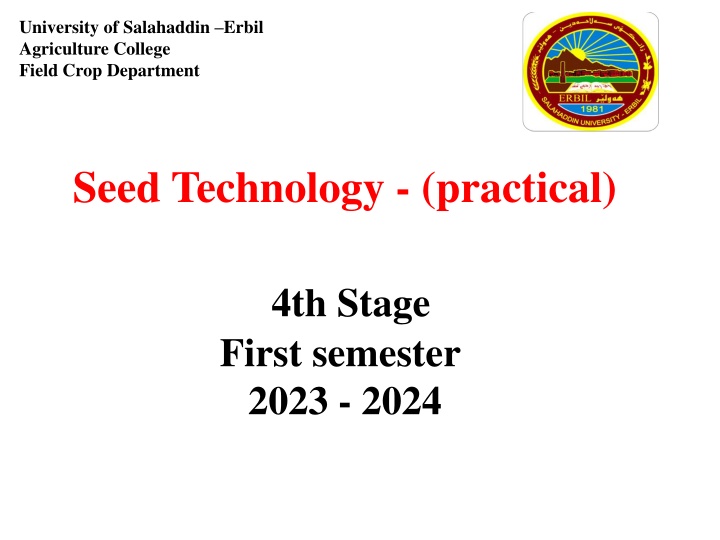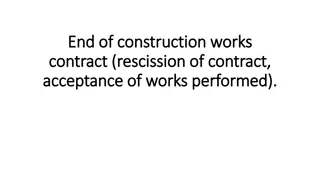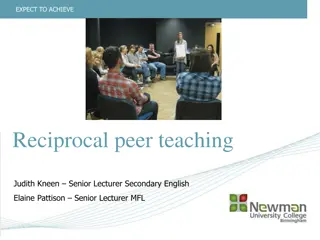
Seed Testing: History, International Association, and Importance
Explore the history of seed testing, the role of the International Seed Testing Association (ISTA), and the significance of evaluating seed quality for successful crop cultivation. Learn about the objectives and methods of seed testing, established standards, and the cooperative efforts towards uniformity in seed evaluation worldwide.
Download Presentation

Please find below an Image/Link to download the presentation.
The content on the website is provided AS IS for your information and personal use only. It may not be sold, licensed, or shared on other websites without obtaining consent from the author. If you encounter any issues during the download, it is possible that the publisher has removed the file from their server.
You are allowed to download the files provided on this website for personal or commercial use, subject to the condition that they are used lawfully. All files are the property of their respective owners.
The content on the website is provided AS IS for your information and personal use only. It may not be sold, licensed, or shared on other websites without obtaining consent from the author.
E N D
Presentation Transcript
University of Salahaddin Erbil Agriculture College Field Crop Department Seed Technology - (practical) 4th Stage First semester 2023 - 2024
Outline Seed testing Brief history of Seed testing International seed testing association (ISTA) Seed testing laboratory 1
Seed Testing The science of evaluating the planting value of seeds has been developed to achieve the following objectives for minimizing the risk of planting low quality seeds: 1 To determine their quality that is, their suitability for planting. 2 To identify seed quality problems and their probable cause. 2
3 To determine the need for drying and processing and specific procedure that should be used. 4 To determine if seed meets established quality standard or labeling specifications. 5 To establish quality and provide a basis for price and consumer discrimination among lots in the market. 3
Brief historyof Seed testing Organized seed testing started more than a hundred years ago. The first station established in Thrandt, in Saxony, Germany, in 1869 under the direction Friedrich Nobbe. In 1871, a seed testing laboratory was opened in Copenhagen, Denemark. At the beginning of the twentieth century 1900 about 130 seed testing station were operating in Europe. 4
The following objectives have served as guidelines 1. To provide methods by which the quality of seed samples can be determined accurately. 2. To prescribe methods by which seed analysts working in different laboratories in different countries throughout the world can obtain uniform results. 3. To relate the laboratory results, in so far as is possible, to planting value. 4. To complete the tests within the shortest period of time possible, commensurate with the above mentioned objectives. 5. To perform the tests in the most economical manner. 5
International seed testing association (ISTA) It became obvious that cooperation between seed testing station was imperative for the establishment of common methods of testing that would secure uniformity in evaluation and test results This need ultimately led to the foundation of the international seed testing association in 1924 Permanent secretariat of ISTA is in Norway. It promotes research in all aspects of seed science and technology including, sampling, testing, storing, processing and distribution. 6
Association of Official Seed Analysts (AOSA) of North America, was founded in 1908. The Society of Commercial Seed Technologists (SCST) was organized in 1922. The Commercial Seed Analyst s of Canada (CSAAC). American Seed Trade Association (ASTA). In Iraq, the first seed testing laboratory was established in 1962 at the department of Field Crops-Ministry of Agriculture at Abu-Ghraib (Baghdad). In Kurdistan region the General Directorate of Seed Production and Certification was established in 2010. 7
Purity and moisture analysis section. Germination and viability analysis section. Special tests section and Seed health section. 8





















